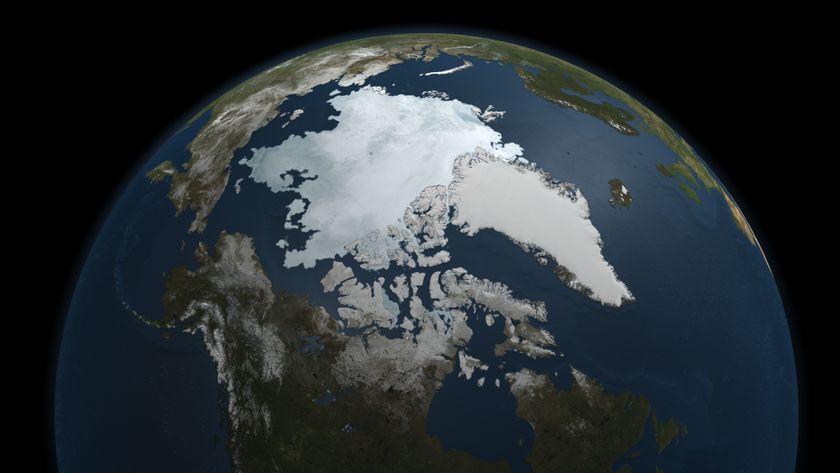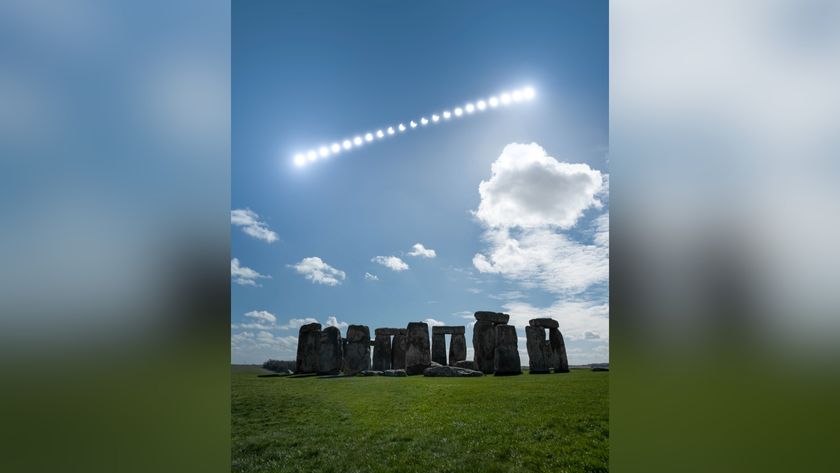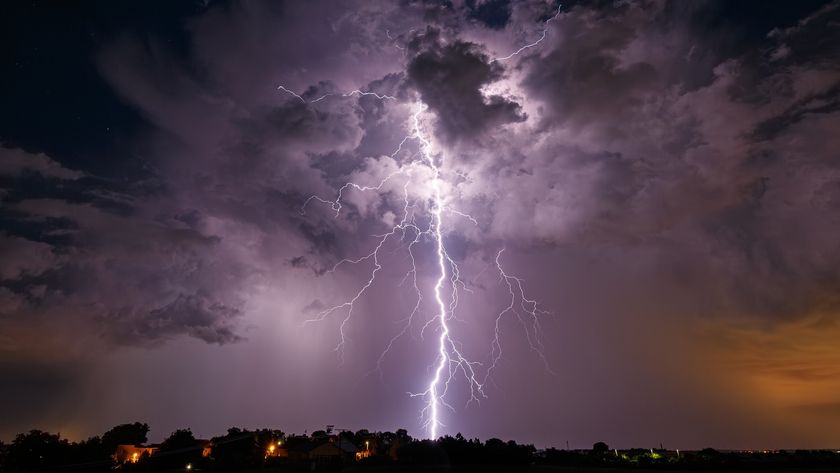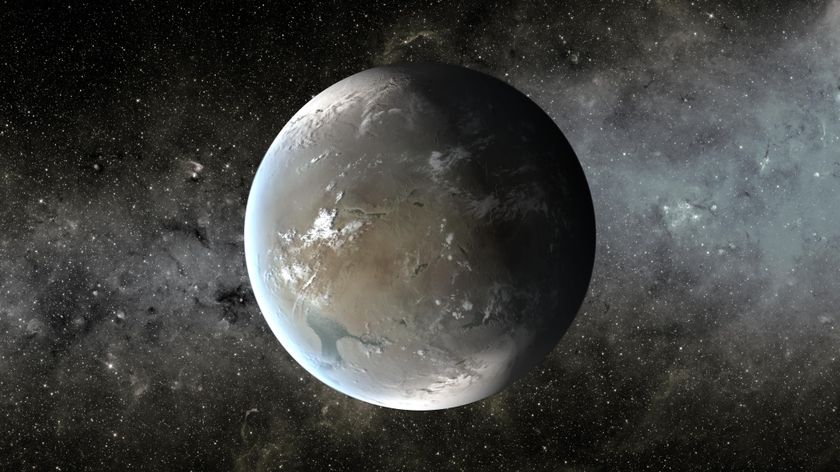Dark Energy and Einstein Converge
In 1998, astronomers studying distant exploding stars stumbled on an amazing discovery: the universe is not just expanding, which they knew, but it is expanding at an ever-faster pace.
The distant supernova, bright stellar explosions inside other galaxies, were fainter than expected; their light was being stretched. With the exception of localized galaxy groupings, all the galaxies of the universe are racing away from each other like spots on an expanding balloon at an accelerating pace.
Gravity as we know it seems not to be in control of things on large scales.
Scientists soon invoked a thing called "dark energy" to explain the unexpected acceleration. But in the years since, they've not figured out what dark energy is. They have, however, determined that the universe initially expanded rapidly, then slowed down, and then sped up again about 6.3 billion years ago.
New observations put the tightest constraints on the whole phenomena yet, confining the very nature of dark energy while not yet explaining it.
Einstein's greatest mistake?
The new results also reinforce the validity of the "cosmological constant," a fudge factor that Albert Einstein introduced into his equations to balance the force of gravity.
Get the Space.com Newsletter
Breaking space news, the latest updates on rocket launches, skywatching events and more!
Einstein called the cosmological constant a great blunder and retracted it. Yet theorists have re-employed it in recent years to account for the effects of dark energy. In the modern view, dark energy should not characteristically change over time. If that's right, the universe will continue to expand forever, ultimately leading to a rather lonely cosmos in which residents of one galaxy could never see or communicate with the others.
It seems to work nicely. And, with the new results from the Supernova Legacy Survey (SNLS), an international team of researchers says some of the offbeat explanations for dark energy appear less likely to be viable.
"Our observation is at odds with a number of theoretical ideas about the nature of dark energy that predict that it should change as the universe expands, and as far as we can see, it doesn't," says Ray Carlberg of the University of Toronto.
The results were announced last week and will be detailed in the journal Astronomy & Astrophysics.
The w factor
The survey pinned down with greater accuracy the distances to supernovas that are so far away they are seen when the universe was about half its present age of 13.7 billion years.
Carlberg explained that the secret of dark energy boils down to what scientists call the "w parameter."
- If w equals -1, then Einstein was right, however unknowingly, and the strength of dark energy does not change over time.
- If w is less than -1, then we're in what Carlberg calls a "very weird situation" in which the dark energy will get stronger until everything, right down to molecules, is torn apart in what one research group described as a Big Rip.
- If w is in the -0.9 to -0.7 range, things don't get much less weirder, as several fantastic theories involving multiple dimensions, cosmic strings and quintessence remain viable.
"We find that w is within 10 percent of -1," Carlberg told SPACE.com. "So, it looks like the 'best bet' at the moment is Einstein's cosmological constant is the right idea."
The results come from observations by the Canada-France-Hawaii Telescope, the Keck Observatory, the twin Gemini Telescopes and the European Southern Observatory's Very Large Telescope.
The data is just one-tenth of what the SNLS survey will ultimately collect, so the constraints are expected to be improved by two or perhaps three times.
That doesn't mean dark energy will be described, but its effect on the universe will be better understood.
"Improved observations of distant supernovae are the most immediate way in which we can learn more about the mysterious dark energy," adds Richard Ellis, a professor of astronomy at the California Institute of Technology. "This study is a very big step forward in quantity and quality."
- Dark Matter and Dark Energy: One and the Same?
- New Observations of Early Universe Help Confirm Theories of Formation
- Universe Has At Least 30 Billion Years Left
Join our Space Forums to keep talking space on the latest missions, night sky and more! And if you have a news tip, correction or comment, let us know at: community@space.com.

Rob has been producing internet content since the mid-1990s. He was a writer, editor and Director of Site Operations at Space.com starting in 1999. He served as Managing Editor of LiveScience since its launch in 2004. He then oversaw news operations for the Space.com's then-parent company TechMediaNetwork's growing suite of technology, science and business news sites. Prior to joining the company, Rob was an editor at The Star-Ledger in New Jersey. He has a journalism degree from Humboldt State University in California, is an author and also writes for Medium.











